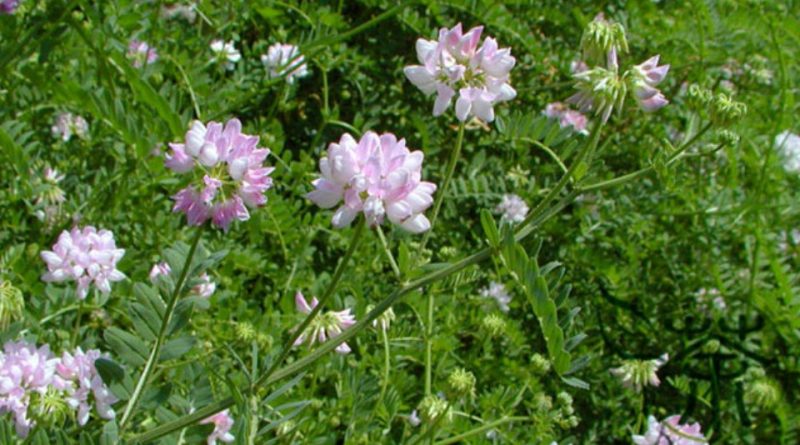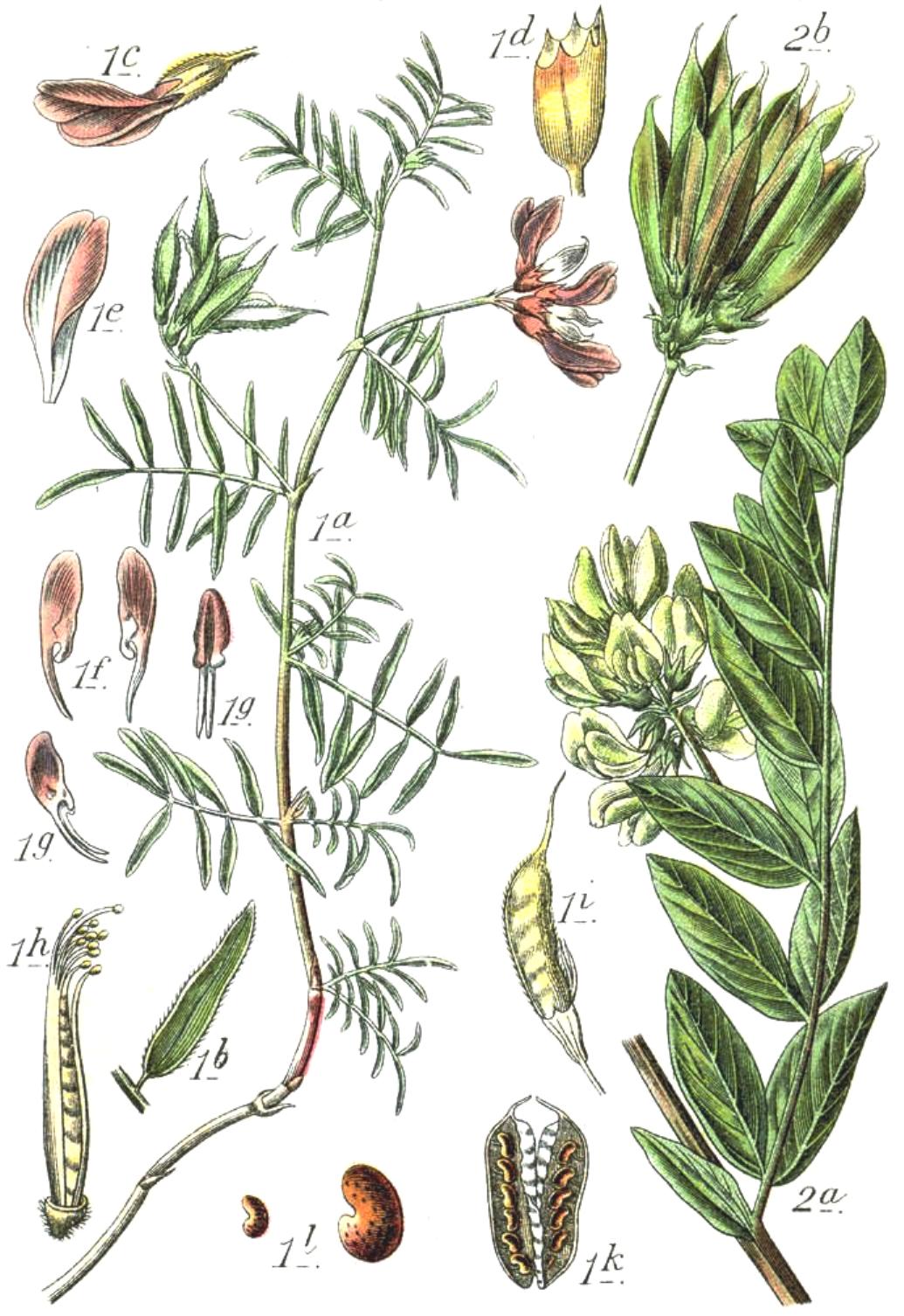Astragalus propinquus
Astragalus propinquus
The Huáng qí (Astragalus propinquus Schischkin) is a perennial herbaceous species of the Fabaceae family.
Systematics –
From the systematic point of view it belongs to the Eukaryota Domain, United Plantae, Magnoliophyta Division, Magnoliopsida Class, Fabales Order, Fabaceae Family, Faboideae Subfamily, Galegeae Tribe and then to the Genus Astragalus and to the Species A. propinquus.
The term Astragalus membranaceus (Fisch.) Bunge is synonymous.
Etymology –
The term Astragalus comes from the Greek name ἀστράγαλοϛ astrágalos astragalus, quoted by Pliny; perhaps from a bone of the tarsus (used by Greeks and Romans to obtain dice for games) which refers to the angular shape of the seeds (according to A. Gentil and Dave’s Garden) or of the gnarled roots (according to D. Gledhill and Flowers in Israel) . According to A. Neill, the Greek name of the plant derives from αστήρ astér astro and from γάλα gála milk for the shape and color of the flower and because the ancients believed that it increased the milk production of the goats that fed on it.
The specific epithet propinquus comes from própe near, next to: near, resembling, closely related to related species.
Geographical Distribution and Habitat –
The Huáng qí is a plant widespread in China, Korea, Mongolia and Siberia where extensive cultivations can be found.
The habitat of this species is that of the temperate zones of the northern hemisphere where it grows in grassy places, deciduous forests from 100 to 1,400 m. of altitude.
Description –
The Astragalus propinquus is a perennial herbaceous plant that when fully ripe reaches an average of 25–40 cm but can grow up to 70 cm or more. The stems are branched.
It has 3–6 cm long leaves, an elliptical triangular shape, imparipinnate and alternate.
The roots are cylindrical, flexible, as big as a human finger, covered by a hard and wrinkled membrane, with a color ranging from yellow to brown; the pulp inside it has a soft and slightly sweet taste, often reminiscent of licorice.
The racemes on the plant are in an axillary position and the peduncle of the plant is very thin. The flowers are clustered in inflorescences. The fruits are pods, which enclose the seeds.
Cultivation –
Astragalus propinquus, being a plant native to Central Asia, where it grows spontaneously, is widespread and cultivated in Korea, Mongolia and Siberia.
Due to its physiological characteristics and its pedoclimatic needs outside these areas, in the rest of the world, it is grown in greenhouses or in nurseries.
It needs fertile soils, with good permeability and air humidity conditions suitable for its vegetative development.
Uses and Traditions –
The Astragalus propinquus, better known as huáng qí (simplified Chinese: 黄芪; traditional Chinese: 黃芪) or běi qí (Chinese:), huáng hua huáng qí (Chinese: 黄花 黄耆) is a plant whose properties are exploited from ancient times in both Western and Traditional Chinese Medicine. This ancient medical tradition has always used it for its toning action, able to raise the threshold of resistance to stress factors, increasing energy; speed up metabolism, and promote tissue repair.
Astragalus has been used for centuries in fu-zheng therapy, which treats disorders by strengthening the body’s natural defense mechanisms. The concept of fu-zheng therapy was recognized by Western researchers, who examined the effects of astragalus on the immune system of patients with cancer undergoing chemotherapy or radiotherapy.
However, the traditional Chinese use of the plant is aimed at stimulating the Qi of the spleen and lungs, ie those organs (together with the kidneys), at the base of the energy flows of the organism and therefore of the defensive energies and immunity. Astragalus is currently studied for the treatment of AIDS, for the prevention of infectious and neoplastic diseases.
The roots of the talus contain triterpene saponins, flavonoids, pyogenic amines and polysaccharides. In particular, polysaccharides stimulate the immune system, strengthening the body’s natural defense mechanisms against infections.
It is precisely the presence of these active ingredients that would give the plant an immunostimulatory and antiviral action against the viruses that cause the most common colds (colds, coughs, fever), but also on those responsible for more serious diseases such as avian influenza and hepatitis B.
The astragalus is in fact able to counteract the atrophy of organs such as the spleen, thymus and intestinal lymph nodes and to favor the phagocytic capacity and the transformation of the T lymphocytes. The saponin content, present in the phytocomplex, gives the plant hepatoprotective action, in as its intake protects the liver from damage caused by chemical or toxic substances; stimulates hepatocyte regeneration; and helps to thin the blood, thus reactivating the functions inhibited by steroids (steroid hormones and cholesterol).
Another property of this plant is related to the ability to lower oxygen consumption in mitochondria; supports the body’s tolerance to stress; and increases cell growth, metabolism and longevity. For these reasons it is indicated to counteract periods of fatigue, fatigue, fatigue and convalescence (especially after antibiotic treatments), to increase learning and memory performance, and improve sleep duration due to its relaxing effects.
Last but not least, this plant has also shown a cardiotonic action, able to intervene on the metabolism of sodium and potassium, reducing arterial pressure and therefore useful in the case of hypertension and angina pectoris, because it supports the functionality of the heart and the circulatory system as a whole.
Regarding contraindications, although astragalus has been known and used for a long time, there are no comprehensive studies about possible harmful effects from use or overdose.
However some ascertained side effects concern fatigue, dizziness and slight lowering of pressure. Therefore its use during pregnancy and lactation is not recommended. Finally, given its immunostimulant and antiviral properties, astragalus should not be taken in conjunction with drugs having the same effect.
Preparation Mode –
The Huáng qí is a famous herbal remedy. The parts of the plant used for the preparation of the healing compounds are the roots: leathery on the outside, but with a soft pulp on the inside.
Their use is mainly in the case of flu and cold syndrome, astragalus is rich in immunostimulant properties. This is why it is used in the presence of infectious diseases (viral), but also when neoplastic diseases occur (such as cancer or cancer). This is because it has an antitumor function, or better, a retardant to the evolution of the carcinogenic pathology.
Guido Bissanti
Sources
– Acta Plantarum – Flora of the Italian Regions.
– Wikipedia, the free encyclopedia.
– Treben M., 2000. Health from the Pharmacy of the Lord, Advice and experiences with medicinal herbs, Ennsthaler Editore
– Pignatti S., 1982. Flora of Italy, Edagricole, Bologna.
– Conti F., Abbate G., Alessandrini A., Blasi C. (edited by), 2005. An annotated checklist of the Italian vascular flora, Palombi Editore.
Attention: Pharmaceutical applications and food uses are indicated for informational purposes only, do not in any way represent a medical prescription; therefore no responsibility is assumed for their use for curative, aesthetic or food purposes.


